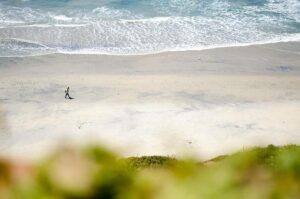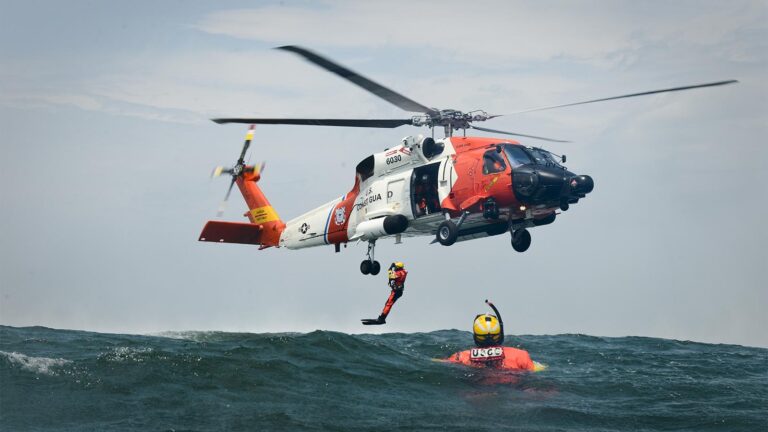US Coast Guard Executes Timely Rescue of 15 Migrants from Disabled Vessel Near San Diego
In a decisive maritime rescue operation off the coast of San Diego, the United States Coast Guard saved 15 migrants stranded on a disabled boat. The incident unfolded late Wednesday night, approximately 15 nautical miles southwest of Point Loma, when the vessel suffered a critical mechanical breakdown and began taking on water. Despite challenging sea conditions, multiple Coast Guard units swiftly mobilized to the location, demonstrating exceptional coordination and expertise. The migrants were safely evacuated to a nearby Coast Guard cutter, where they received urgent medical care and humanitarian support.
This rescue highlights the Coast Guard’s unwavering dedication to maritime safety and border enforcement. Key factors that necessitated immediate intervention included:
- Complete propulsion and navigation system failure rendering the vessel immobile
- Adverse nighttime weather complicating rescue maneuvers
- Presence of vulnerable individuals, including children, among those rescued
Following established protocols, the Coast Guard collaborated closely with immigration and border agencies to ensure the migrants received appropriate processing and care. This event exemplifies the ongoing vigilance and interagency cooperation essential to safeguarding lives at sea while maintaining maritime security.
| Rescue Detail | Information |
|---|---|
| Date of Rescue | April 24, 2024 |
| Number of Migrants Rescued | 15 |
| Location | 15 nautical miles southwest of Point Loma |
| Primary Responders | USCG Cutter & Air Station San Diego |
| Weather Conditions | Moderate seas, nighttime operation |
Navigating the Complexities of Maritime Rescue in the Pacific Region
Conducting search and rescue missions in the Pacific Ocean presents a myriad of challenges. The vast expanse of open water, combined with unpredictable weather patterns such as sudden fog banks, strong gusts, and turbulent waves, significantly complicates timely interventions. These environmental hurdles not only endanger those stranded but also place rescue teams at considerable risk, demanding advanced training and specialized equipment to operate safely and effectively.
Beyond natural obstacles, logistical difficulties further impede rescue efforts. Communication breakdowns due to limited signal coverage in remote areas can delay coordination among Coast Guard units and partner agencies. Additionally, the wide variety of vessels encountered—from small, makeshift fishing boats to larger commercial ships—requires adaptable rescue strategies tailored to each unique situation. The table below outlines some of the primary challenges and corresponding mitigation tactics:
| Challenge | Impact | Mitigation Strategy |
|---|---|---|
| Severe Weather | Prolonged response times and increased risk | Deployment of all-weather vessels and aerial support |
| Communication Limitations | Delayed interagency coordination | Use of multi-frequency radios and satellite communication |
| Varied Vessel Types | Necessity for diverse rescue techniques | Specialized training and flexible rescue equipment |
| Remote Incident Locations | Extended search zones and resource strain | Integration of drone surveillance and sonar mapping |
Assessing Migrant Vessel Safety Risks and Proactive Prevention Measures
The recent rescue off San Diego’s coast sheds light on the hazardous conditions faced by migrants undertaking perilous sea journeys. These vessels are frequently overcrowded and lack fundamental safety features, such as reliable navigation systems and emergency equipment. Such deficiencies dramatically increase the likelihood of mechanical breakdowns and capsizing incidents. Addressing these risks requires a multifaceted approach focused on prevention and preparedness. Key safety concerns include:
- Unsuitable vessel design: Many boats used for migration are ill-equipped for open ocean travel, heightening the danger of failure.
- Communication deficiencies: Absence of dependable distress signaling devices hampers timely rescue operations.
- Inadequate life-saving equipment: Migrants often embark without life jackets or emergency supplies, leaving them exposed during emergencies.
To mitigate these hazards, the Coast Guard is increasingly leveraging cutting-edge surveillance technologies and fostering stronger partnerships with international agencies. Preventive efforts also include rigorous vessel inspections and educational outreach campaigns in countries of origin to raise awareness about maritime safety. The following table summarizes prevalent risks alongside recommended countermeasures:
| Risk Factor | Recommended Preventive Measure |
|---|---|
| Mechanical failure | Mandatory maintenance checks and prohibition of unseaworthy vessels |
| Overcrowding | Strict enforcement of passenger limits and boarding controls |
| Communication gaps | Distribution of satellite phones and emergency radios |
| Absence of life jackets | Compulsory provision of life-saving gear prior to departure |
Enhancing Coast Guard Response and Interagency Collaboration for Maritime Emergencies
The recent migrant rescue underscores the critical importance of improving communication and coordination among Coast Guard units and allied agencies. Incorporating advanced maritime tracking technologies and enabling real-time information exchange can drastically shorten response intervals during emergencies involving disabled or distressed vessels. Additionally, conducting regular joint training exercises focused on border security and humanitarian aid will foster seamless cooperation and operational readiness across jurisdictions.
Key areas for improvement include:
- Implementing interoperable communication platforms accessible to all relevant agencies
- Establishing clear rapid response protocols with defined roles and responsibilities
- Increasing funding and resources to support extended patrols and rapid deployment teams
- Promoting community engagement and anonymous reporting tools for early detection of distressed vessels
| Focus Area | Proposed Initiative | Anticipated Outcome |
|---|---|---|
| Communication Systems | Integrate satellite data and AIS sharing platforms | Accelerated vessel location tracking |
| Training Programs | Conduct quarterly multi-agency drills | Enhanced operational coordination |
| Resource Enhancement | Equip vessels with state-of-the-art rescue technology | Improved mission effectiveness |
| Public Outreach | Develop anonymous tip reporting mobile applications | Timely incident identification |
Looking Ahead: The Coast Guard’s Ongoing Commitment to Maritime Safety and Security
The swift and effective rescue of 15 migrants near San Diego exemplifies the vital role the United States Coast Guard plays in protecting lives at sea. As investigations continue into the factors leading to this incident, authorities remain steadfast in addressing the complex challenges of maritime safety and immigration enforcement in the region. This successful operation reaffirms the Coast Guard’s dedication to safeguarding all individuals who face peril on America’s waterways, ensuring that help is always within reach.







